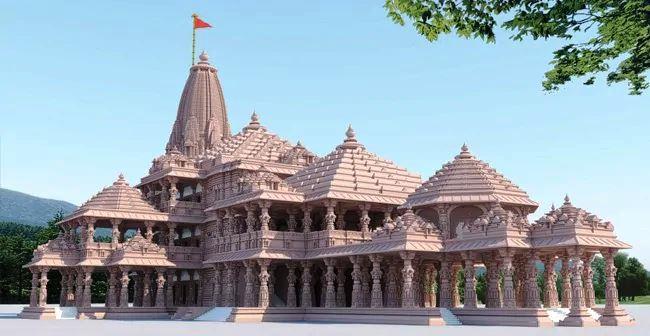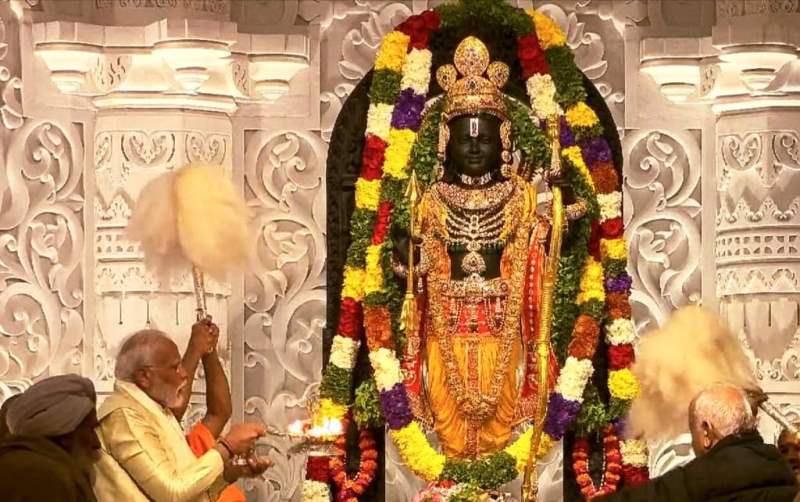Ram Mandir Ayodhya: Everything You Should Know Before Visiting
Updated on 23 January 2024 by Rishabh kumar
The Ram temple is being built after the resolution of a decades-long dispute over the site. The controversy surrounding the temple dates back to the 16th century when the Babri Masjid was constructed on the site believed by Hindus to be the birthplace of Lord Ram. Tensions escalated in the 20th century, culminating in the demolition of the mosque in 1992 by kar sevaks, leading to widespread communal violence. The legal battle over the site endured for decades. In 2019, the Supreme Court of India delivered a historic verdict, granting the disputed land to Hindus for the construction of the Ram temple. Simultaneously, an alternative parcel of land was allocated to Muslims for the construction of a mosque.
Ram Temple: Timeline
Ram Temple: An Overview
The consecration or 'pran pratishtha' ceremony of Shri Ram Lalla at the Shri Ram Janmabhoomi temple in Ayodhya was held on January 22, 2024. Prime Minister Narendra Modi presided over the rituals which took place in the Abhijit Muhurat. UP chief minister Yogi Adityanath and RSS chief Mohan Bhagwat were also present at the ceremony.
The Ram temple inauguration ceremony was attended by 7,000 guests from India and overseas. Over a lakh devotees are already in Ayodhya for the ceremony.
Trustee of Shri Ram Janmabhoomi Teerth Kshetra Trust and chief of the Udupi Pejawar mutt Sri Vishwaprasanna Teertha said devotees would be able to visit the Sri Ram temple in Ayodhya a day after the consecration of Lord Sri Ram’s idol.
Ram Mandir Aarti's timings:
The Vedic rituals for the Pran-Pratishtha ceremony of Ram Lalla started on January 16, a week before the main ceremony There are three Aarti timings:
Jagaran / Shringar Aarti - 6:30 am
Bhog Aarti - 12 pm
Sandhya Aarti - 7:30 PM
Ram Mandir Darshan Timings:
Devotees can partake in the Darshan at the Ayodhya Ram Mandir from 7:00 AM to 11:30 AM and again from 2:00 PM to 7:00 PM.
Here’s how you can book Aarti/Darshan:
The online booking is temporarily kept on hold. Please refer to the official website for the latest updates. For same-day bookings, offline reservations will be accommodated subject to slot availability. Devotees are required to be present at the temple premises 30 minutes prior to the Aarti. A valid government ID is required to receive the Aarti passes.

Importent Ponts Regarding The Ram Mandir
Main Architect
The main architect of the temple is Chandrakant Sompura, a renowned architect from Gujarat who comes from a family with a long lineage of temple architects. Chandrakant Sompura played a key role in designing and planning the Ram Mandir, which is dedicated to Lord Ram, at the Ram Janmabhoomi site in Ayodhya, India.
Architectural Style
The Ram Mandir in Ayodhya is built in the Nagara style of temple architecture, which is a traditional Indian temple architecture style. The Nagara style is characterised by its tall and curvilinear spires, known as ‘shikharas’, and a pyramidal tower-like structure. This style has been historically associated with temples dedicated to Lord Shiva and Lord Vishnu. The design of the temple draws inspiration from classical Indian architectural principles and incorporates elements that are typical of North Indian temple styles.
Nearest Railway Station
The Ayodhya Dham junction is the closest railway station to the Ram Mandir. Ayodhya is well-connected by rail, and the railway station is situated in the city, making it convenient for visitors traveling by train to reach the Ram Mandir.
Nearest Airport
If you are travelling by air, the nearest airport is Maharishi Valmiki International Airport, Ayodhya Dham (also known as Ayodhya Airport). Alternatively, you can use major airports like Lucknow International Airport and then travel to Ayodhya by road. If you are travelling by train, you can reach the newly revamped Ayodhya Dham junction railway station. Once you reach Ayodhya, you can use local transportation like auto-rickshaws, taxis, or cycle rickshaws to reach the Ram Mandir.
Other Attractions
Ayodhya is a city with a rich historical and cultural heritage, and besides the Ram Temple, there are several other prominent attractions that visitors can explore.
Other Best Places in India:-









